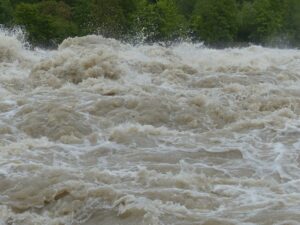Measuring A Flood’s Intensity – How Much Is Too Much?
Since floods are very common, it is important that we take as many flood prevention measures as possible. Fortunately, there have been many technological advancements that allow us to predict when a flood is about to come. Not only that, there are ways to measure a flood’s intensity as well.
prevention measures as possible. Fortunately, there have been many technological advancements that allow us to predict when a flood is about to come. Not only that, there are ways to measure a flood’s intensity as well.
Causes of Floods
The U.S. Geological Survey states that there are two factors that affect floods due to rainfall. First is the duration of the rainfall and the second is the intensity of the rainfall. If it rains a lot over a small period of time, it can cause significant damage. If you live in a flood-prone area, it is best to have contact with a disaster restoration company.
There are many other causes of floods. These include flash flooding, which can also cause significant damage. When ice suddenly melts on the mountains, it causes rivers to overflow as well as their banks. However, whatever the cause of the flood, there are ways to measure’s intensity.
How to Measure a Flood’s Intensity?
Hydrologists are able to measure the height of a flood, water velocity and other features that indicate its intensity. The DFO Flood magnitude scale measures how severe a flood is.
Flood Height
The USGS has sites that are able to measure the stream stage, streamflow and river height. Gages present at those sites monitor the gage height, a term that measures the height of water in a stream. These gages achieve two things: they can warn people that a flood is about to occur and help measure its peak height after flooding has occurred.
Water Velocity
This is an important measure of the intensity of the flood. The water velocity, which measures how fast a flood moves, can tell a lot about how detrimental a flood can be. This is because the faster a flood moves, the more destruction it can cause. One way to determine the water velocity of a flood to measure its intensity is by using a tracer. Chemical tracers and radioisotopes are able to measure the intensity of turbulent waters.
Discharge
Discharge is a measure of the amount of water that moves down a stream at a given location. To get this measurement, experts multiply the average velocity of the water in a cross-sectional area with the area of water in the same cross-section of the stream. To measure discharge, water scientists use a wading rod or cable to calculate the depth and width of water and then calculate the area (depth x width).
Then they use a current meter to measure how quickly the water moves by calculating the number of revolutions the wheel makes when it is immersed in the stream. If the water is particularly deep, then they might use an acoustic Doppler current meter and calculate discharge through sound frequency.
How Much Flood is too Much?
The flood magnitude value tells you how severe a flood is and what value is ‘too much.’ The breakdown goes as follows:
High
If the maximum velocity times maximum depth is higher than 1.0 and the maximum depth is higher than 1.0, then the flood intensity is high. If the maximum velocity times maximum depth is between the range 0.2 and 1.0 and the maximum depth is higher than 1.0, then the flood intensity is still high.
If the maximum velocity times maximum depth is lower than 0.2, but the maximum depth is higher than 1.0, then the flood intensity is still high. If the maximum velocity times maximum depth is higher than 1.0 and the maximum depth is between the ranges 0.2 and 1.0, then flood intensity is high. Similarly, if the maximum velocity times maximum depth is greater than 1.0 but maximum depth is lower than 0.2, flood intensity remains high.
Medium
If the maximum velocity times maximum depth is between 0.2 and 1.0 and the maximum depth is also between the same range, flood intensity is medium.
Low
If maximum velocity times maximum depth is between the range 0.2 and 1.0 and the maximum depth is lower than 0.2, then flood intensity is low. If the maximum velocity times maximum depth is less than 0.2 and maximum depth is between 0.2 and 1.0, flood intensity is low. Lastly, if both measurements are below 0.2, flood intensity is low.
Flood Damage Restoration
Floods can cause significant damage to homes, primarily leading to water damage. Water damage will then lead to a host of other issues, including mold damage. If you are residing in an area that is prone to floods, it is best to take measures that will mitigate if not completely prevent the damage done to your home. Water most often penetrates to basements and stays there, leading to severe destruction and also weakening the foundation of your home.
911 Restoration of South Bay Los Angeles
If you live in South Bay Los Angeles, then you can avail the expert restoration services of 911 Restoration of South Bay Los Angeles. As soon as you call them, they will appear within just 45 minutes to limit the damage. They will handle all aspects, from water damage restoration to mold remediation.


